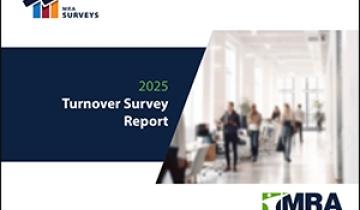Read time: 3 mins
Q: Our organization is faced with having to conduct a permanent staff reduction. What items should we consider to ease the impacted employee’s transition and remain legally compliant?
A: When organizations permanently reduce staff, several items should be considered to ensure the employer meets legal requirements and to reduce the impact on the affected employee(s). Here are a few things to consider (not all-inclusive):
- Employers should be sure they are committed to the permanent reduction in staff, i.e., a reduction in force (RIF). Furloughs and layoffs are not permanent in nature and are handled differently. Furloughs and layoffs can sometimes turn into RIFs, however.
- Employers may need to comply with the federal Worker Adjustment and Retraining Notification (WARN) Act, state WARN and mini-WARN laws, and any other mass layoff legislation. A thorough review of the requirements, including notice requirements, under these laws will help employers ensure they are in legal compliance.
- Some states allow payment in lieu of notice, which an employer may consider if the timing is urgent.
- State unemployment notice laws should be checked to ensure the required information is provided to the affected employee(s). If notice is not required, employers may want to provide employee(s) with a copy or link to unemployment benefit information to assist the employees with the unemployment application process.
- Employers also need to consider state-specific wage payment laws, including those for final wage payment. Various states require the immediate payment of final wages upon discharge or expedited payment upon request of the impacted employee.
- Impacted employees covered by benefit plans offered by the company should be provided with any applicable continuation of coverage notices. Some states have specific continuation laws as well as the requirements under the federal Consolidated Omnibus Reconciliation Act (COBRA). Employers should work with third-party administrators, if used, and benefits brokers to ensure employees receive any required continuation of coverage notices.
- Employers can consider providing outplacement services to the affected employee(s). Some states provide benefits for impacted employees at no cost and may even offer resume and interview workshops at the employer’s location. In addition to state-provided assistance, employers may also want to consider offering outplacement assistance through a vendor to help their employees secure their next employment opportunity. MRA offers outplacement assistance. Please contact us for a proposal for these services.
- Lastly, employers are not obligated to provide a severance payment to impacted employees unless they have company policy or established practice that states otherwise. Employers may want to consider offering one, however. Severance can assist the employee with covering expenses until they can find their next opportunity and may reduce the risk of legal challenges for employers. If it is determined that a severance payment will be provided, the payment should be contingent on the employee signing a document that specifies the conditions that must be met to receive the severance payment. An employment attorney should draft the agreement to ensure it is legally permissible and enforceable. It is best practice to have a written severance policy or program to allow consistency and reduce the chances of a claim.
Reducing employees is challenging for all involved, especially those impacted. Human Resources and the leadership team should partner with legal counsel throughout the process to meet legal obligations and minimize the impact on the separated employees.






